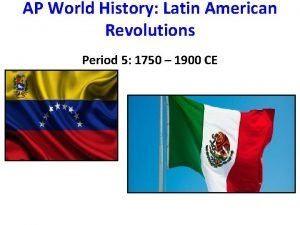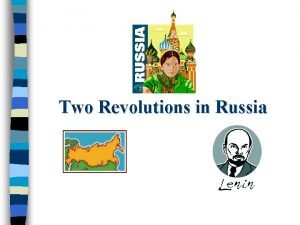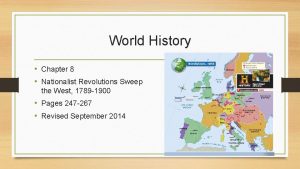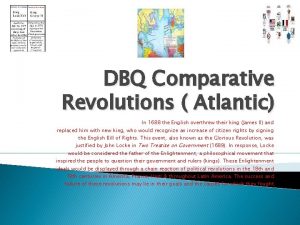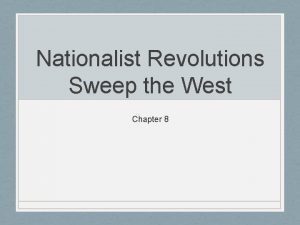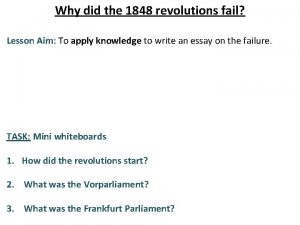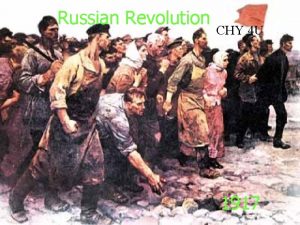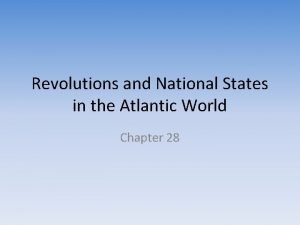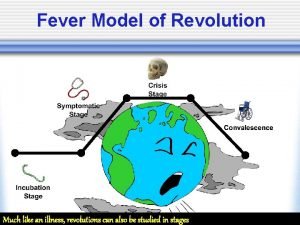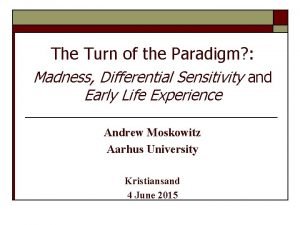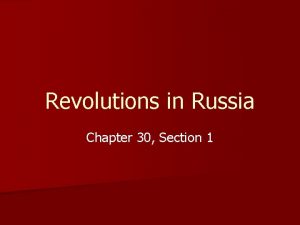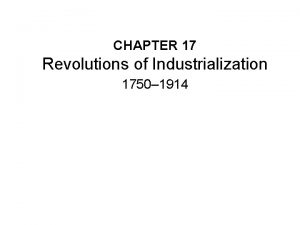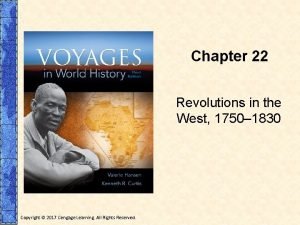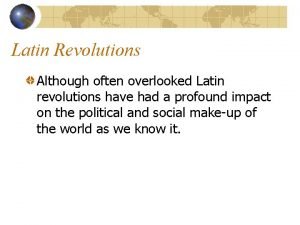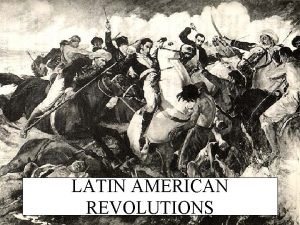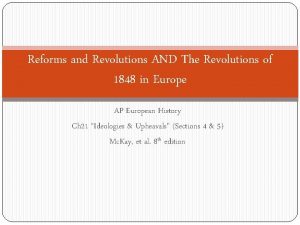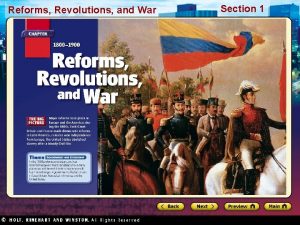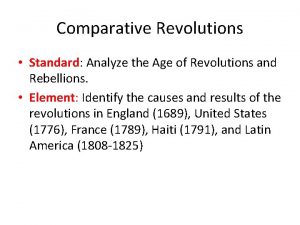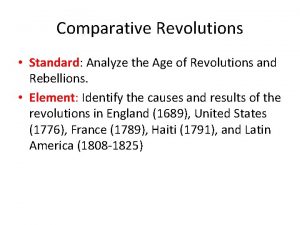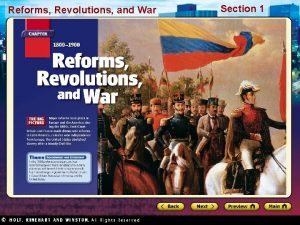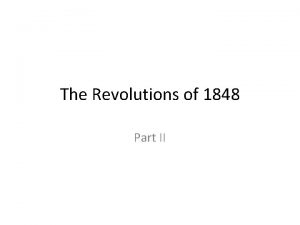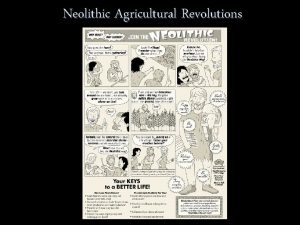Shortterm Consequences of WW 1 The Consequences Revolutions






















- Slides: 22

Short-term Consequences of WW 1

The Consequences: Revolutions Treaty of Versailles League of Nations Collapse of the Ottoman Empire & Austria. Hungary Social & Economic Cost Geopolitical Rearrangement Growth of Socialism & Fascism

Revolutions after WWI Communist Revolutions: Russia Central Europe USA China Non- Communist Revolutions: Greece Ireland Mexico


The Russian Revolution (1917) February Revolution: Abdication of Czar Nicholas II; collapse of Imperial Russia and end of Romanov dynasty. The Russian Provisional Government took over. The formation of the Petrograd Soviet by the socialists. Dual power. October Revolution (Bolshevik Revolution): The Bolsheviks took over after the Russian Provisional Government failed. Caused the Russian Civil War.

Revolutions Throughout the World Communistic Revolutions: Germany The German Revolution (Nov 1919 – Aug 1918): the communistic revolutionaries tried to take over the government (as the Bolsheviks did in Russia), but failed. USA After the war and the Russian Revolution, USA had its first red scare. China The nationalist party, Kuomintang, joined with the Chinese Communist Party to fight for a reunification of China (1923).


The Treaty of Versailles (28 th of June 1919) A peace treaty at the end of World War I in Versailles, it ended the war state between Germany and the Allied War Powers. Germany had to accept full responsibility for causing the war. She also had to pay war reparations of a total of 132 billion marks ($385 billion today). Territorial Changes. Establishment of the League of Nations.

League of Nations League of nations was founded in order to maintain the peace in Europe and make sure another war didn’t break out after world war 1. American president Woodrow Wilson was appalled by the behavior, which took place during the war; the gruesome killings. To make sure such a thing did not happen again, he felt that the only thing to do was to create an international body, which would only have the purpose of maintaining world peace. If an international dispute were to take place, the League of Nations would sort them out, and avoid any further violence and war. The world (especially Europe) was so devastated after World War 1, so getting the peoples support for this


of the Ottoman Empire The Turkish Was of Independence (1919 -1923) The Treaty of Sèvres (10 th of August 1920). France, Britain, and Italy divided the Empire into territories, which where under their command. Internal Degeneration & External Pressure. Many new countries were created.

The Collapse of Austria. Hungary The monarchy collapsed due to the German loss on the western front. The leftist and liberal movements in Vienna and Budapest supported the separation of ethnic minorities.

Economic Costs Technology grew drastically; production of cars, planes, radios etc. skyrocketed. The United States economy grew quickly with the use of mass production, thus producing goods without using human labor and producing it much quicker and cheaper. Europe's overall economy suffered loss in landscapes, physical property and finances Europes economy was weakening while The United states was growing into a global economic power.

In 1914, Europe was seen as a reliable moneylender, but after WW 1, all of Europe was greatly in debt (10 billion US dollars) to allies. In order to pay back debts, countries in Europe began to print large amounts of money; leading they countries into a long period of inflation People who had earlier enjoyed a comfortable lifestyle in the middleclass, were now financially in a rocky state. Germany was struggling the most; with war damages and reparations to pay created a great inflation in Germany. German mark jumped from 4. 6 millions to one dollar, to 4. 6 trillion to one dollar in 3 months.

Social Costs Death and destruction, war killed 10 -13 million people, families suffered and the optimistic spirited people of the past had now lost all hope Many people were angered as they did not see why the war had taken place Pain and suffering; this generation is called the Lost Generation as so many died during the war. Growing sense of mistrust towards the leaders and government officials, after witnessing the horror of the war and felt that the Government didn’t have their best interests in mind.

Political Changes Spreading of fascism and socialism (Germany, Austria, Britain, France). Republic government gains influence: before war Europe contained 19 monarchies and 3 republics, after war there were 13 monarchies, 14 republics and 2 regencies The government (Weimar) which was set up in Germany, wasn’t liked by the people and didn’t do much for controlling Germany.

Geographical Changes Nations that gained territory after WWI: Yugoslavia Romania Greece France Italy Denmark Belgium Poland Estonia Latvia Lithuania UK (League of Nations mandates) Japan

Nations that lost territory after the WWI: China Bolshevist Russia Weimar Germany Austria Hungary Turkey Bulgaria UK (most of Ireland)

Geographical Changes

With the formation of new small states in especially eastern Europe, there were many ethnic minorities wanting to be united with other countries where their ethnicity dominated. The border changes among with political changes, resulted in a large number of refugees

Growth of Socialism & Fascism: The Fascist Manifesto, 1919. In 1920, Mussolini and the Fascists allied themselves with industrial businesses and started attacking workers and peasants in order to preserve order internal peace in Italy Socialism: Revolutions throughout Europe and the rest of the world.

 Shortterm
Shortterm Shortterm housing
Shortterm housing Shamma al muhairi
Shamma al muhairi Chapter 17 atlantic revolutions and their echoes
Chapter 17 atlantic revolutions and their echoes Aryan food
Aryan food Revolutions in europe and latin america section 2 quiz
Revolutions in europe and latin america section 2 quiz Monroe doctrine definition ap world history
Monroe doctrine definition ap world history A tale of two revolutions grade 10, 1080l
A tale of two revolutions grade 10, 1080l Agricultural revolutions ap human geography
Agricultural revolutions ap human geography Nationalist revolutions sweep the west
Nationalist revolutions sweep the west How were european rulers guided by enlightenment thought?
How were european rulers guided by enlightenment thought? Chapter 8 nationalist revolutions sweep the west
Chapter 8 nationalist revolutions sweep the west Atlantic revolutions dbq
Atlantic revolutions dbq List of revolutions
List of revolutions Europe faces revolutions
Europe faces revolutions Why did the 1848 revolutions fail
Why did the 1848 revolutions fail A tale of two revolutions grade 10, 1080l
A tale of two revolutions grade 10, 1080l Revolutions and national states in the atlantic world
Revolutions and national states in the atlantic world Fever model of a revolution
Fever model of a revolution Structure of scientific revolutions
Structure of scientific revolutions Czars resist change
Czars resist change Chapter 17 revolutions of industrialization
Chapter 17 revolutions of industrialization 22 revolutions
22 revolutions






